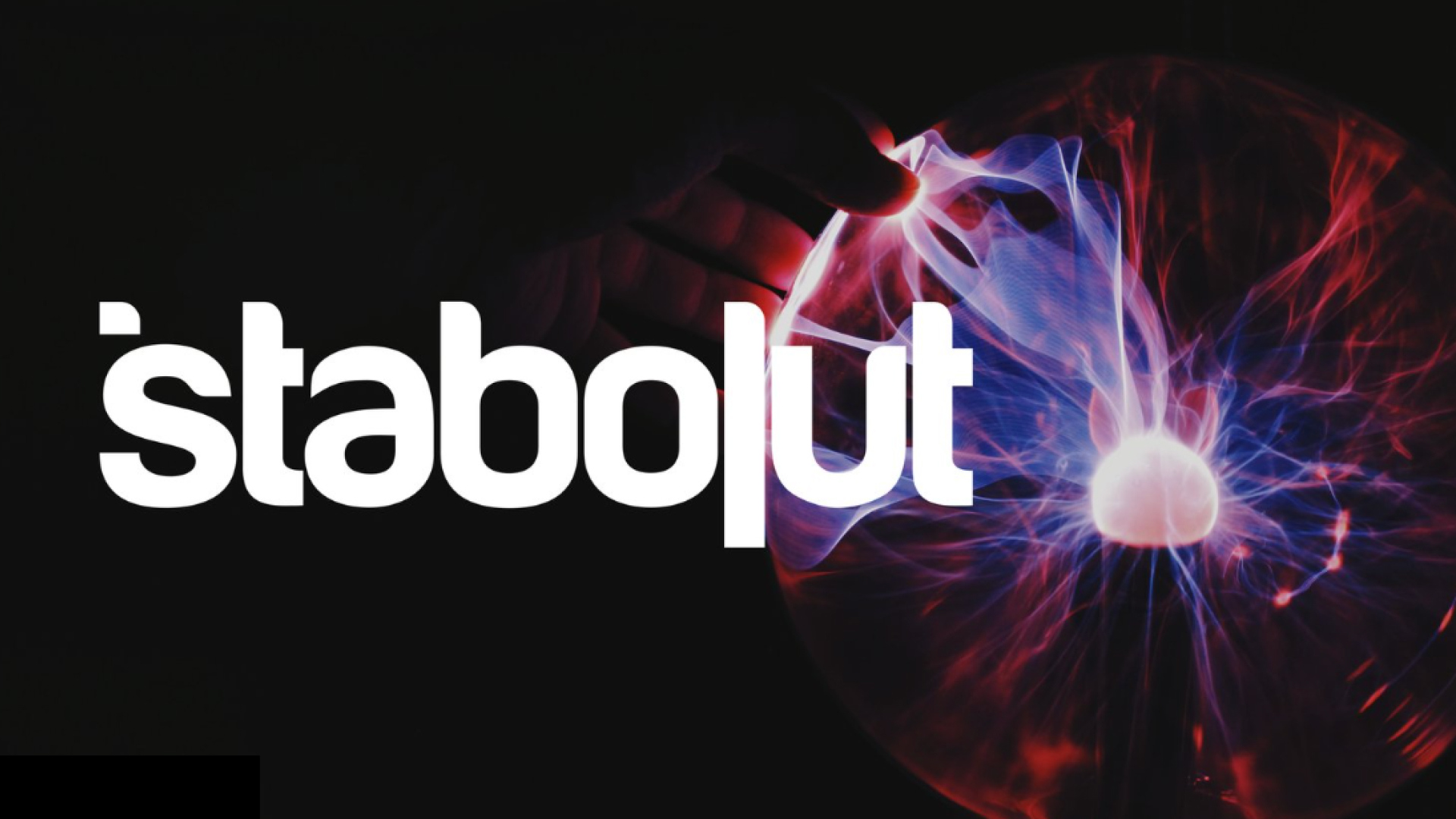It’s clear that the stablecoin market is booming. Offering decentralized alternatives to fiat-backed stablecoins is becoming more prevalent. Crypto-backed stablecoins are now taking the spotlight.
One is particularly promising: USB of Stabolut. We interviewed Eneko Knorr, co-founder and CEO of Stabolut, to get his take on the subject. Before we delve into this, let’s take a look at where the stablecoin market is headed.
In November 2024, the US Federal Reserve Governor, Christopher Waller, stated: “Stablecoins are effectively “synthetic” dollars that can bring benefits to the financial system. These digital assets linked to the dollar could have a lot of potential benefits and eliminate inefficiencies in the financial system”.
That’s a pretty clear statement. Now, let’s explain what crypto-backed stablecoins are and how they differ from others. Eneko has distinct reasons for choosing to create this type of stablecoin.
What are crypto-backed stablecoins, and how are they unique?
These innovative stablecoins use crypto-backed assets as collateral while simultaneously maintaining a stable peg to fiat currencies – typically the US dollar, blending decentralization with financial stability.
Primarily, to be able to navigate the stablecoin market, understanding the 3 main categories is the first step:
• Fiat-backed stablecoins
Fiat-backed stablecoins tend to dominate the market as currently they have the most exposure in this space and offer stability but with centralized trade-offs. Examples are the well-known USDT and USDC pegged to the US dollar.
They offer familiarity and stability. On the other hand, their centralized structure raises transparency issues. Limited visibility into reserves, coupled with a lack of real-time audits, is an area of concern.
• Algorithmic stablecoins
Algorithmic stablecoins rely on supply-and-demand mechanisms rather than collateral to maintain their peg.
Although their benefits offer the user scalability and decentralization, the absence of backing assets leaves them highly vulnerable to market volatility.
The collapse of the TerraUSD stablecoin highlighted its fragility. Such models often fail to sustain stability during major market disruptions, eroding investor confidence.
• Crypto-backed stablecoins
The idea behind crypto-backed stablecoins is based on a decentralized twist. They use reserves of cryptocurrencies as collateral.
To mitigate the volatility of crypto assets, derivatives are utilized to back the stablecoin. Its USD value is maintained through a delta-neutral strategy on derivative exchanges. Additionally, over-collateralization adds an extra layer of security.
Stabolut is leading the pack with this cutting-edge yield-bearing approach.
However, before we take a deeper dive and delve into the mechanics here, what are the benefits of crypto-backed stablecoins?
What are the advantages of crypto-backed stablecoins?
The main advantage is that with Stabolut you don’t need banks; their concept doesn’t rely on traditional finance.
“If we embrace crypto to break free from the traditional financial system, relying on stablecoins backed by fiat currencies and stored in banks goes against the very principles of decentralization!” said Eneko Knorr, Co-Founder and CEO of Stabolut.
Hence, from their uniquely decentralized design, crypto-backed stablecoins ramp up decentralization.
- First off, crypto-backed stablecoins operate under the watchful eye of decentralized autonomous organizations (DAOs).
- Next, through governance tokens, community members can play an active role from voting on key decisions to collateralization policies and more. This gives collective oversight and reduces the reliance on centralized control.
- Finally, such crypto-backed stablecoins rely on the use of derivatives to counteract the volatility of crypto assets. This creates a buffer against market fluctuations, which gives more peg stability.
Stabolut: Offering the best of all worlds: Bridging privacy, stability, and yield

Driven by the vision of a truly decentralized economy, Stabolut has developed an innovative, unique crypto-backed stablecoin, USB. With its trustless transaction capabilities, it is designed to tap into delta-neutral hedging strategies to generate yields for its users.
In a recent interview with our Onchain’s Ashton Barger, Eneko Knorr, Co-Founder and CEO of Stabolut, stated: ”We are on the brink of a transformative period for both stablecoins and DeFi which will have profound implications for the global financial systems.”
Stabolut’s use cases highlight the diversity of this crypto-backed stablecoin:
- Store of value and cross-border payments
- Yield generation through DeFi
- Tokenized microfinance
- Merchant payment gateways
- Decentralized lending platforms
Clearly, a lot of thought and innovative design has been put into this project. Let’s take a step back and examine how this stablecoin came to fruition.
How did Stabolut start? A brief look back
Stabolut was founded on the belief that a decentralized financial economy is not just a vision but a necessity. Its founders, Eneko Knorr, a tech start-up entrepreneur with 10+years in the crypto and DeFi space, and Julian Beltran, a serial entrepreneur with over 10 years of blockchain, AI, and crypto experience in Southeast Asia and Europe, decided together to turn this vision into reality.

During our interview with Eneko, we asked, “What inspired the development of your crypto-backed stablecoin?”
Enoko stated: “After the collapse of the TerraLuna ecosystem and the temporary de-pegging of USDC, we recognized the need for a stablecoin that could operate independently from the current financial infrastructure.”
Together, they embarked on this mission to develop a stablecoin that would reduce reliance on central authorities, champion censorship resistance, ensure global accessibility, and empower users through decentralized governance. To this end, USB was born.
Stabolut’s strategy: Redefining stability and innovation
How can Stabolut successfully navigate and conquer the stablecoin market?
Stabolut’s USB employs a delta-neutral hedging strategy to maintain its peg to the US dollar. It offers decentralization, financial resilience, and privacy-enhancing features.
Using this methodology, USB offers a USD alternative that doesn’t need the traditional banking system but offers a privacy-enhancing bankless operation.
What makes Stabolut exceptional?
Taking a birds-eye view, Stabolut decided to combine decentralization, transparency, and cutting-edge technology to address the challenges of volatility, trust, and liquidity in the stablecoin market.
In short, they decided to tackle volatility with the following two key mechanisms:
- Over collateralization: By holding reserves significantly higher than the stablecoin supply, Stabolut ensures the USB remains securely pegged to the US dollar, even during market fluctuations.
- Delta-neutral strategies: By using advanced financial instruments, Stabolut’s model is able to offset price changes in its collateral, generating yield from funding rate arbitrage while maintaining stability.
From the transparency and liquidity perspective, Stabalut has also covered this angle well.
Real-time reserve audits boost the trust level and reduce hidden risks. It enhances liquidity by integrating into DeFi ecosystems, ensuring USB is readily accessible for payments, cross-border transactions, and DeFi protocols.
During our Onchain interview with Eneko Knorr, CEO and Co-founder of Stabolut, he said: ”We built everything on top of Arbitrum because Stabolut is not only the USB stablecoin, it is also a money transfer system – it is literally built for cross-border and fast transactions.”

Stabolut’s business model
The business model of Stabolut is designed to address the limitations of fiat-backed stablecoins, which suffer from centralization and regulatory challenges. By both mitigating counterparty risks and enhancing user privacy,
A prime benefit here is that its model targets key challenges faced by existing stablecoins, such as trust gaps and high transaction fees.
The USB stablecoin will prioritize transparency and reliability through real-time audits of its assets whilst simultaneously ensuring users can trust its stability.
Furthermore, Stabolut is backed by the expertise of the founders of Dextools.io, a thriving platform with an average of over 30 million monthly views that will further increase Stabolut’s global exposure.
According to Julian Beltran, Co-founder and CTO of Stabolut,: “With USB, Stabolut aims to unlock a new era of transparent, privacy-preserving, fast, inexpensive, and interoperable exchange across the globe.”
Stabolut’s next chapter: Pioneering the future of crypto-backed stablecoins
By leveraging advanced collateralization mechanisms and Bitcoin’s trusted foundation, Stabolut is well-positioned to further bridge the gap between traditional finance and crypto. It will do so based on its commitment to decentralization, transparency, and innovation.
Its future plans are to drive adoption and lead the way into the future of decentralized finance with a focus on trust, empowerment, and reliability.
2025 Prediction: The stablecoin economy is on the brink of mainstream adoption
According to Cointelegraph: “The total issuance of stablecoins has continued to grow, with new records being set along the way. In Singapore, stablecoin payments reached $1 billion in value, and their usage is expected to continue growing worldwide.”

Moving forward into 2025, as more countries look towards digitizing their economies and institutional adoption grows, this will provide further traction.
With clearer regulations coming and more new players entering the field, stablecoins are set to evolve from niche financial tools into a mainstream asset class. They will ultimately integrate seamlessly with traditional finance, offering faster, cheaper, and more inclusive financial services and more innovative use cases.
2025 will most likely mark the dawn of mass stablecoin adoption.
What could be stopping stablecoin adoption?
However, although stablecoins offer immense potential, their path to widespread acceptance isn’t without hurdles.
Transparency remains a critical concern, particularly for fiat-backed stablecoins with inconsistent or incomplete reserve audits. High-profile failures, such as with TerraUSD, have put the spotlight firmly on the need for robust collateralization.
Scalability is another significant challenge. High transaction fees on networks like Ethereum can hinder stablecoins’ accessibility for everyday usage.
Optimistic into 2025 with crypto-backed stablecoins
Nevertheless, advancements in blockchain technology and the rise of alternative low-cost networks are steadily addressing these limitations. This will help pave the road ahead for a more efficient and reliable stablecoin ecosystem. Stabolut is contributing its share.
Finally, the future of stablecoins lies in their ability to seamlessly connect traditional finance with crypto while striking the perfect balance between innovation and regulation.
And there’s so much more to say about this digital asset class. Discover how they can unlock new opportunities and transform your approach to finance. Dive in and discover the detailed insights in our report: Stablecoins: The Most Lucrative Business Onchain.



